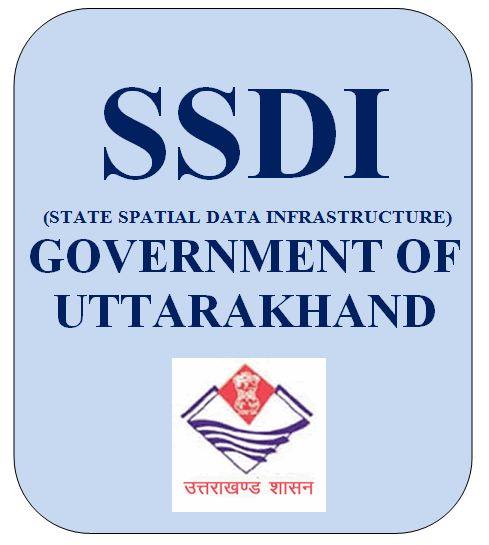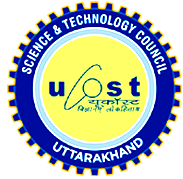SSDI Division
SSDI
SSDI
Context
Taking note of some of the issues stated above, several policy level changes have been brought about recently. For providing better access to the spatial data holdings of different national level Survey/Data Providing Agencies, Government of India has constituted the National Spatial Data Infrastructure (NSDI) in 2006. The National Map Policy has been further liberalized to make available spatial data sets as Open Series Maps to support developmental decision-making. Different Ministries and Departments working in the sectors of Land Resources, Water Resources, Biodiversity, Agriculture, and Disaster management have framed strategies highlighting the utility of spatial data and technologies in their work flow or business processes and decision-making. State Governments are increasingly showing interest in setting up State Level Spatial Data Infrastructures (SDIs) to support Decentralised Planning. Several State Governments like Government of National Capital Territory of Delhi, Kerala, Karnataka, West Bengal, Jammu & Kashmir, Haryana etc. have already launched initiatives to develop State level Spatial Data Infrastructurs (SSDIs). State level Coordination Steering and Executive Committees have been set up to support implementation of SSDIs. Information & Communication Technologies (ICT), on the other hand have further evolved with advancements in the fields of Database Management; Workflow Management; Internet; and Web-based Services. Under the new/revised policies and the emerging scenario of requirement of SDIs, spatial data management strategies/ICT set up of organisations are required to be re-oriented/upgraded with the deployment of advanced tools/ technologies. Databases of various Data Providing Organisations need be re-engineered so as to make the relevant data sets available and accessible to potential user agencies like panchayats, nagarpalikas, Line Departments, or the civil society. Emerging concepts like Enterprise GIS, Geo-spatial Interoperability; Geo-Web Services; Geo-visualisation; and the Geo-Semantic Web etc. in this context are required to be explored and utilized.
The concept of Spatial Data Infrastructure (SDI)
Spatial Data Infrastructure (SDI) is a collection of technologies, policies, institutional arrangements, financial and human resources to facilitate availability, access and effective utilization of spatial data. SDI provides an environment for connecting user applications to appropriate data sets over a network (e.g. Internet) either through a direct access mechanism or via services. Core technical components of an SDI include Databases, Catalogues, Geo-processing/ catalogue services, and User applications in the form of software utilities built on the data sets or services to address specific information needs of the user community. SDI is potentially capable of providing the requisite spatial data/information support in the task of operationalising the concept of Decentralised Planning. Under NRDMS, several tools/ technologies useful in setting up and using SDIs have been developed and tested in the recent past in different real-life environments/application studies.
District Wise List
DISTRICT WISE LIST OF SPATIAL DATA LYERS DEVELOPED IN THE UTTARAKHAND STATE
District |
Department |
Spatial Layers |
Almora |
Police Department | Kotwali Boundary, Thana Boundary, Reporting Chaukee, Police Barrier, Kotwali Head Quarter, Thana Head Quarter, Police line, SP Office, Mahila Thana Boundary, Mahila Thana Head Quarter, |
| PWD | District Boundary, Block Boundary, Villages, National Highway, State Highway, Major District Roads, Other District Road, Village Roads, PMGSY Roads, PWD Guest Houses | |
| Health Department | Base Hospital, District Hospital, Women Hospital, Civil Hospital, Community Health Centers, Primary Health Centers, Additional Primary Health Centers, Ayurvedic Hospital, Allopathic Hospital, District TB Unit, DOT Centers, Child and Maternity Welfare Centers | |
| Education Department | Government Inter Colleges, Inter Colleges, Government Girls Inter Colleges, Government High School, Government Girls High School, High School, Junior High School, Primary Schools. | |
| Election Department | Assembly Constituency Boundary, Polling Booths. | |
| Jal Nigam Department | Perennial Streams, Non-Perennial Streams, Water Supply Schemes, Hand pumps | |
| Forest Department | Reserve Forest, Civil Forest, Barren Area | |
| Agriculture Department | Agricultural Land | |
| Revenue Department | Digital Cadastral Maps of Village Patherkot, Village Phalseema, Village Barsila, Village Paner | |
Nanital |
Police Department | Kotwali Boundary, Thana Boundary, Reporting Chaukee, Police Barrier, Kotwali Head Quarter, Thana Head Quarter, Police line. |
| PWD | District Boundary, Block Boundary, Villages,National Highway, State Highway, Major District Roads, Other District Road, Village Roads, PMGSY Roads, PWD Guest Houses | |
| Health Department | Base Hospital, District Hospital, Women Hospital, Civil Hospital, Community Health Centers, Primary Health Centers, Additional Primary Health Centers, Ayurvedic Hospital, Allopathic Hospital, District TB Unit. | |
| Forest Department | Reserve Forest, Civil Forest, | |
| Agriculture Department | Agricultural Land | |
| Revenue Department | Digital Cadastral Maps of Village Bajun, Village Gahalna, Village Mangoli | |
Pauri Garhwal |
Police Department | Kotwali Boundary, Thana Boundary, Reporting Chaukee, Police Barrier, Kotwali Head Quarter, Thana Head Quarter, Police line. |
| PWD | District Boundary, Block Boundary, Villages, National Highway, State Highway, Major District Roads, Other District Road, Village Roads | |
| Forest Department | Forest Boundary | |
| Agricultural Land, Barren Land | Digital Cadastral Maps of 47 Villages of Kot Development Block of District Pauri Garhwal | |
| Revenue Department | Digital Cadastral Maps of 47 Villages of Kot Development Block of District Pauri Garhwal | |
| Jal Nigam | Perennial Stream, Non-Perennial Stream | |
Tehri Garhwal |
Panchayatraj Department | District Boundary, Block Boundary, Villages, Gram Panchayat |
| Election Department | Assembly Constituency Boundary, Polling Booths | |
| Forest Department | Forest Boundary | |
| Agricultural Land, Barren Land | Agricultural Land, Barren Land | |
| Jal Nigam | Perennial Streams, Non-Perennial Streams | |
Rudraprayag |
PWD | District Boundary, Block Boundary, Villages, Roads |
| Forest Department | Forest Boundary | |
| Agriculture Department | Agricultural Land, Barren Land | |
| Jal Nigam | Perennial Streams, Non-Perennial Streams | |
Udham Singh Nagar |
Police Department | Reporting Chaukee, Police Barrier, Thana Head Quarter, |
| PWD | District Boundary, Block Boundary, Villages, Roads |
PROGRESS SUMMARY
Background
National Spatial Data Infrastructure (NSDI) defined as the technologies, policies, and people necessary to promote sharing of geospatial data throughout all levels of government, the private and non-profit sectors, and the academic community.The goal of this Infrastructure is to reduce duplication of effort among agencies, improve quality and reduce costs related to geographic information, to make geographic data more accessible to the public, to increase the benefits of using available data, and to establish key partnerships with states, counties, cities, tribal nations, academia and the private sector to increase data availability.
Objective of the Project
The fundamental objectives of the present project are:- To develop a standards-based GeoPortal and Clearinghouse for Uttarakhand State and demonstrate its utility in Decentralized Governance.
- To build technical capacity of various government departments in geographic information management for sustained maintenance and use of the Portal, and
- To increase awareness and understanding of the vision, concepts, and benefits of Spatial Data Infrastructure at different hierarchical levels
Project Team
| Adviser : Dr. Ps Acharya NRDMS Division, DST GoI Email ID: psa@nic.in / psanrdms@gmail.com | Member Secretary: Dr. Rajendra Dobhal DG UCOST Email ID: drrdobhal@gmail.com | PI of the Project : Dr. D.P Uniyal UCOST DehradunEmail ID : dpuniyal.ucost@gmail.com | Co- PI : Dr. J.S Rawat NRDMS Center, SSJ Camus, Almora Email ID : jsrawat1955@gmil.com |
|---|
| Dr. Manmohan S Rawat | Mr. Sandeep Petwal | Mr. Mayank Bahuguna | Ms. Deepa Rautela |
|---|---|---|---|
| Designation: Technical CoordinatorE-mail: manmohansinghrwt@gmail.com Contact No.: | Designation: System AnalystE-mail: ucost.sanjay3@gmail.com Contact No.: 9412363875 | Designation: GIS Assistant E-mail: bahuguna340@gmail.com Contact No.: 9536111083 | Designation: GIS Assistant E-mail: deeparautela14@gmail.com Contact No.: 8057419642 |



Social Media Links